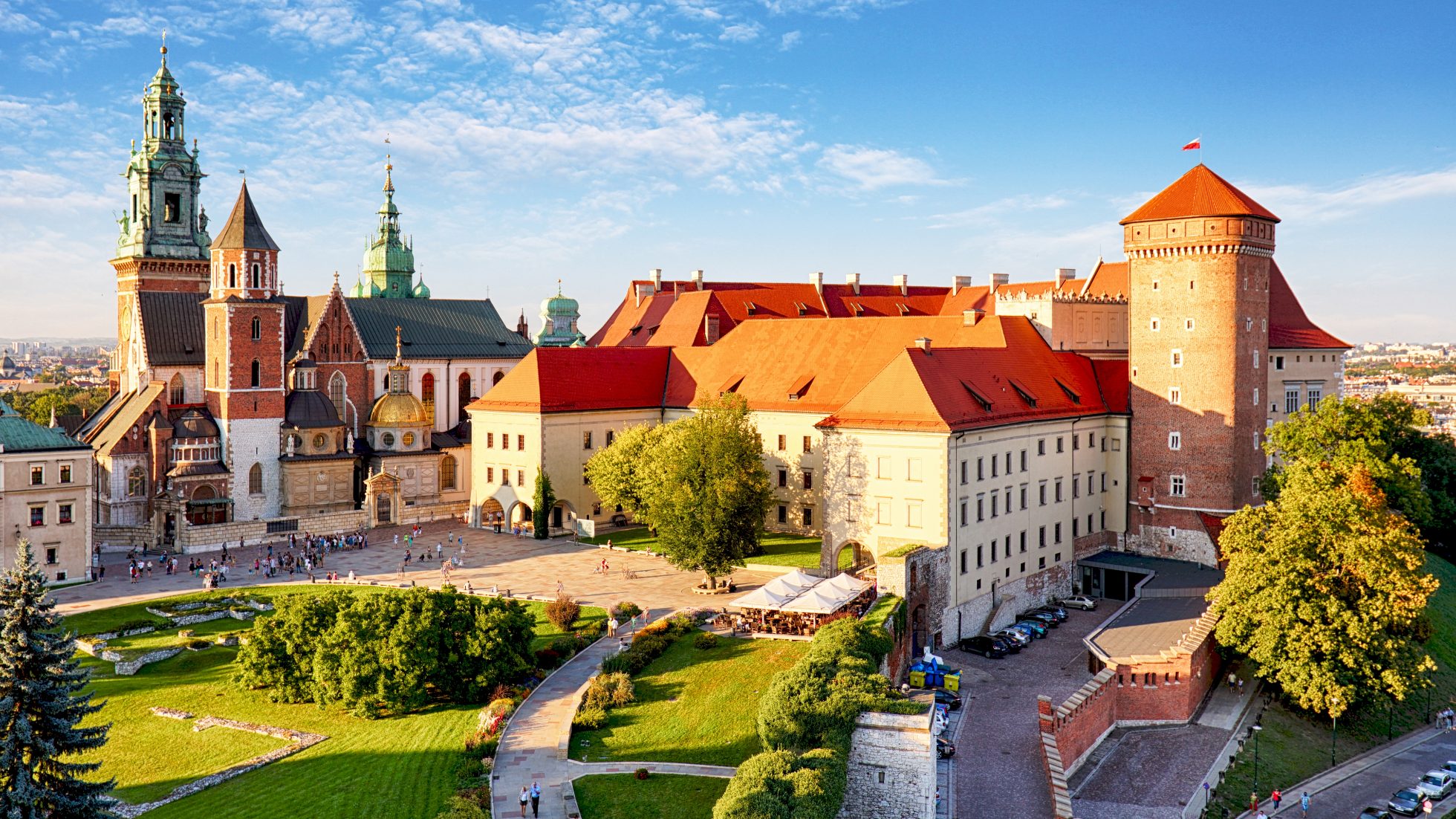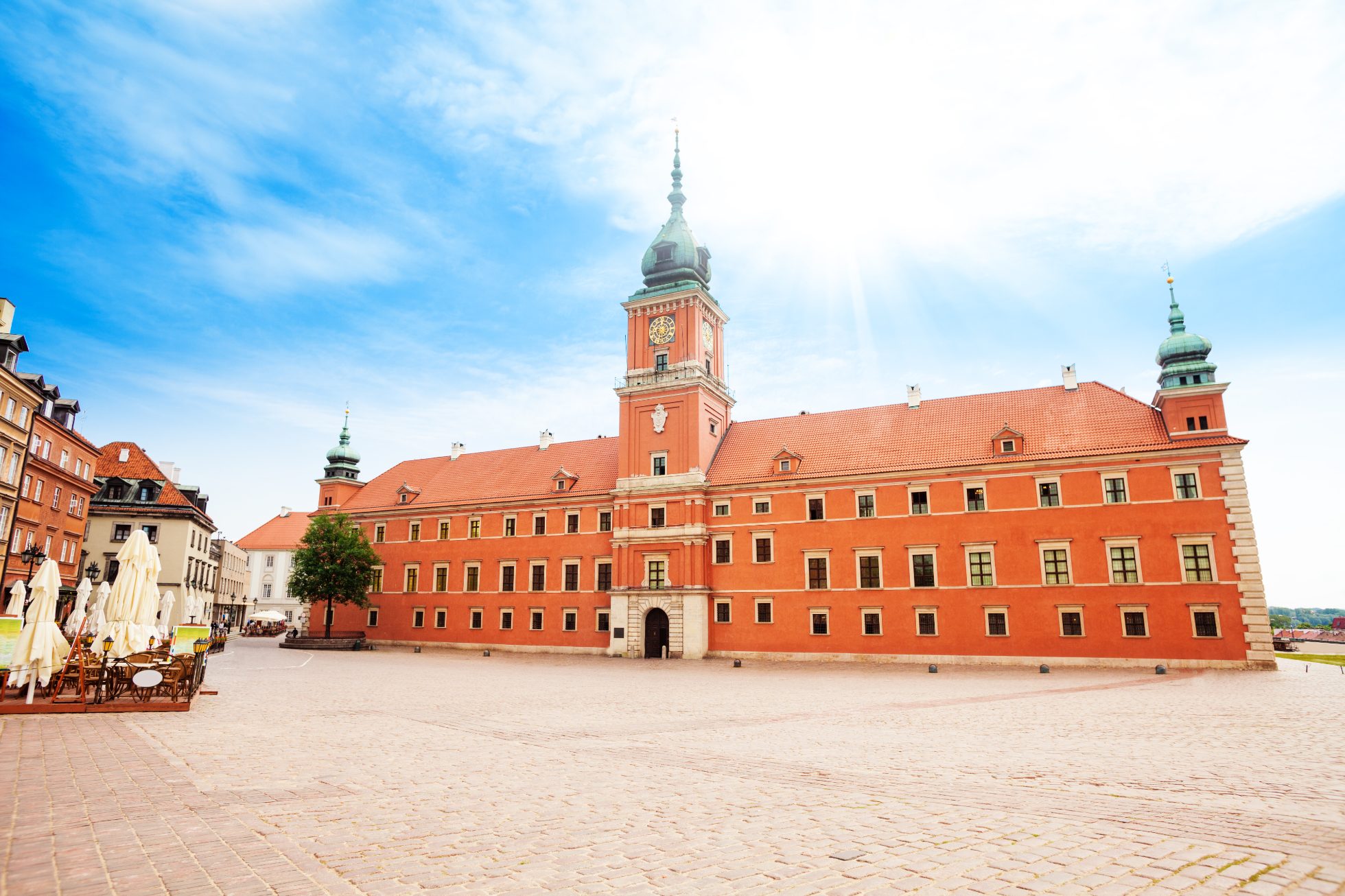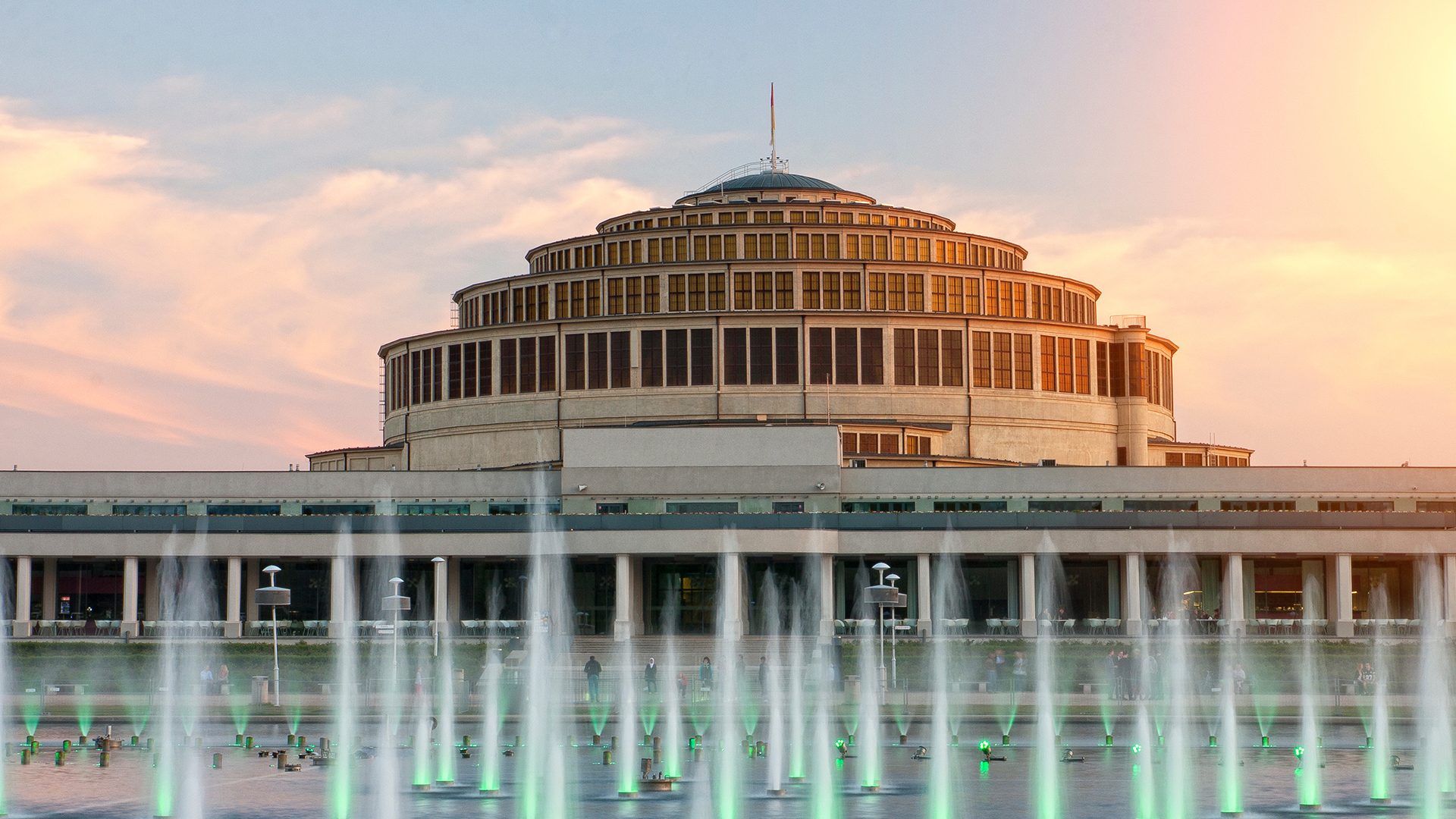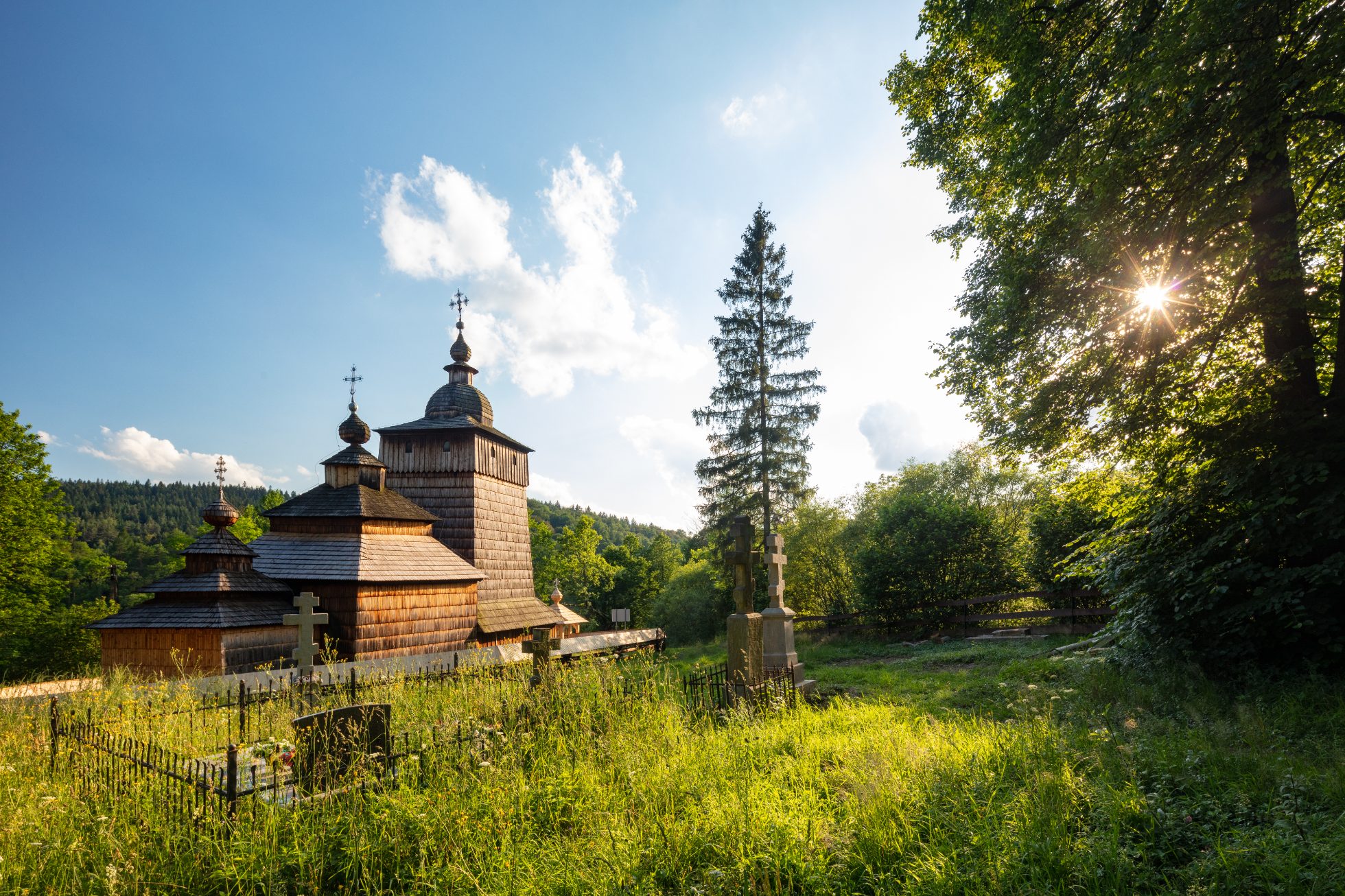UNESCO World Heritage List in Poland — 17 monuments
🕗 9 minutes | December 9, 2024 | Text Klara Krysiak

Poland brings together the best of Poland — multiculturalism, wildlife and folklore, and travelling through the country provides extraordinary experiences and allows you to discover its new face. This uniqueness has been recognized by the United Nations, which has placed as many as 17 Polish sites on the prestigious UNESCO World Heritage List! Which UNESCO sites in Poland must be seen at least once in a lifetime? Find the answer in our guide.
- Polish sites on the UNESCO World Heritage List — what is worth seeing?
- Cracow's Old Town among UNESCO monuments in Poland
- Old Town in Warsaw recognized by the World Heritage Committee
- Centennial Hall in Wrocław — a UNESCO World Heritage Site
- Zamosc's Old Town on the Polish UNESCO list
- Teutonic Castle in Malbork on the List of World Cultural Heritage
- The medieval urban complex of Toruń
- Bialowieza Forest
- Royal salt mines in Wieliczka and Bochnia
- Kalwaria Zebrzydowska
- Auschwitz-Birkenau
- Wooden churches of southern Małopolska
- Muskauer Park
- Wooden Orthodox Churches in the Western Carpathian Region
- Churches of Peace in Jawor and Świdnica
- Silver and Zinc Lead Ore Mines in Tarnowskie Góry and Groundwater Management System
- UNESCO sites in Silica — a region of prehistoric mining
- Ancient UNESCO sites in Poland — Carpathian beech forests in the Bieszczady National Park
- Summary
- Polish sites on the UNESCO World Heritage List — what is worth seeing?
Polish sites on the UNESCO World Heritage List — what is worth seeing?
You will find UNESCO List sites in Cracow, Torun, Zamosc and Warsaw, among others. There are as many as 17 in total, and in addition to their cultural and natural value, they are simply wonderful tourist attractions for which our country is worth a trip. World Heritage Sites include castles, historic areas of cities, churches, mines, and even forests. You can find a complete list of heritage sites below!
Check prices for flights around Poland
Cracow's Old Town among UNESCO monuments in Poland
The former capital of Poland, city of kings and tourist capital of Malopolska is a real treasure trove of national memorabilia and UNESCO monuments located in Poland. Cracow is called the cradle of Polish culture for a reason — your head may spin from the number of monuments!
Among the oldest and most distinctive monuments of the World Heritage Site is the Old Town of Cracow, more specifically, the Main Square from the mid-13th century. Surrounded by rows of centuries-old town houses and palaces, it is the largest medieval town square in Europe. It is dominated by two imposing buildings — the Cloth Hall with stalls continuing the centuries-old trading tradition, and St. Mary's Basilica with its Gothic altar by Veit Stoss.

When visiting UNESCO-listed sites in Cracow, it is impossible to miss such places as the Wawel Royal Castle, Collegium Maius and the Czartoryski Museum, where the famous “Lady with an Ermine” awaits you — one of Leonardo da Vinci's most magnificent paintings. A few steps from the Old Town, meanwhile, begins Kazimierz, the former Jewish quarter, famous for its artistic cafés, art galleries and lively nightlife.
The heart of Cracow is Szeroka Street with its historic synagogues, Podgórze with the remains of the Jewish ghetto, and Oskar Schidler's factory, known from, “Schidler's List” — Steven Spielberg's 1993 cult film. Commerce, art and great culture — Cracow's UNESCO-listed sites in Poland will provide a powerhouse of attractions for everyone!
Check prices for flights to Cracow
Old Town in Warsaw recognized by the World Heritage Committee
The UNESCO World Heritage List also includes the attractions of the current capital, Warsaw's Old Town. Destroyed almost completely during World War II, like a phoenix from the ashes it rose from the ruins in just a few years to delight anew with colourful bourgeois town houses, elegant palaces and the majestic Royal Castle.

Today, the historic part of Warsaw is teeming with big-city life. There is no shortage of traditional restaurants, café gardens, souvenir stores and art galleries — everything is at your fingertips! To appreciate the vastness of the place, climb the bell tower of St. Anne's Church — the view is stunning!
At the end of your tour, don't forget to reach for a local delicacy — Zygmuntówka cake. It's an unusual meringue consisting of an almond bottom, chocolate cream, whipped cream and cranberry jam that looks and tastes delicious. Warsaw is a place you must visit when discovering the most important UNESCO sites in Poland.
Check prices for flights to Warsaw
Centennial Hall in Wrocław — a UNESCO World Heritage Site
Wroclaw is the European Capital of Culture and the seat of government of the Lower Silesian Voivodeship, as well as the place where you will see one of the engineering marvels of the 20th century and unique UNESCO-listed buildings in Poland. The Centennial Hall was built in 1913 for exhibitions showcasing the history and economic achievements of Lower Silesia.

The design by local architect Max Berg included innovative reinforced concrete technology, not previously used on such a large scale. The proposal did not please city councillors, who compared the hall's skeleton to… a hat box. Fortunately, they quickly changed their minds, thanks to which Wrocław gained an object that is permanently inscribed in the history of world architecture. Today the Centennial Hall serves as an entertainment and conference centre, hosting business, sports and cultural events. The area surrounding the hall also has much to offer — the Japanese Garden or the Wrocław Zoo evoke similar emotions as this unique UNESCO site in Poland!
Check prices for flights to Wroclaw
Zamosc's Old Town on the Polish UNESCO list
Built far from large urban centres, Zamosc is a perfect example of the Renaissance concept of the “ideal city.” Founded in 1580 by Chancellor Jan Zamoyski, it combines sublime beauty with the functionality of a city located on an important trade route. As planned by architect Bernardo Morandi, you'll find the best of Italian and Central European architectural traditions here.

The centrepiece of Zamosc's Old Town, a UNESCO-listed site in Poland, is the impressive Rynek Wielki with its lofty town hall tower and magnificent St. Thomas Collegiate Church. The square is surrounded by bourgeois houses with arcades, including historic Armenian houses decorated with beautiful bas-reliefs and ornaments. The city was also once surrounded by powerful fortifications, including seven bastions, the relics of which are open to the public.
A walk down Grodzka Street will complete the work — Zamoyska Academy, the “Synagogue” Center, the former Chancellor's Palace and the Arsenal are monuments that create the true atmosphere of the city. And all this just 90 kilometres from Lublin! Go to Zamosc and discover with your own eyes the most beautiful UNESCO sites and objects in Poland.
Teutonic Castle in Malbork on the List of World Cultural Heritage
Among the most important UNESCO sites in Poland, could not miss the largest brick fortress of medieval Europe — the Teutonic Castle in Malbork is the first known example of a regular four-wing defensive fortress. Built with 4.5 million bricks, it consists of three main structures: High Castle, Middle Castle and Lower Castle, separated from each other by a high defensive wall and extensive dry moats.
The tour of Malbork Teutonic Castle should start with the oldest part of the complex with St. Anne's Chapel, known as the resting place of the Grand Masters of the Teutonic Order. In the Middle Castle awaits the Great Refectory and a rich collection of amber, and the Lower Castle… here you will see what life was like in the old centuries. The Arsenal, the Folwisery, the stables and the brewery are a treat not only for history buffs, so check out flights to Gdansk and plan an exceptional trip to nearby Malbork — a must-see UNESCO site in Poland!

The medieval urban complex of Toruń
The list of cultural heritage sites also includes the medieval urban complex of Toruń: the Old and New Town and the ruins of the Teutonic Castle. In addition, there are remnants of ancient fortifications in the form of fragments of walls, gates, towers, and the Leaning Tower, about which you have surely heard many legends.
But, but! Torun's medieval urban complex is not the only one among the city's heritage sites. The Copernicus House, located on the street named after him, where the famous astronomer was born, also draws crowds. Today, the building has been transformed into the Copernican Museum, which shows the old realities of a bourgeois family's life. You'll also find an impressive model of 16th-century Toruń there.

Bialowieza Forest
Bialowieza Forest is a place where nature rules, and Polish bison live under centuries-old, 50-meter-high trees. There are more than 1,000 of them! Bialowieza National Park itself, in turn, has an area of 150,000 hectares and lies partly in Poland and partly in Belarus (its western part, located in Poland, covers 62,500 hectares).
What attracts tourists to Bialowieza Forest is its natural ecosystem: unregulated watercourses and wetlands, which are home to many species of plants, fungi, and animals. The old trees in Bialowieza Forest are also very impressive — there are even stops along the most interesting specimens of the “Royal Oaks Route” tourist route, and the trees themselves are named after Polish rulers.
Royal salt mines in Wieliczka and Bochnia
Poland's list of cultural heritage sites is extremely diverse. It includes national parks, churches and… 13th century salt mines — underground, self-sufficient cities, equipped with ventilation, drainage, lighting, and transportation systems.

The King's salt mines can be traversed on foot or by boat — there are a whole host of adits, grottoes, passageways, and underground lakes that stretch for nearly 300 kilometres, at depths of up to 327 meters. If you would like to learn a little more about this surprising place, you can take a walk along the two-kilometre tourist route, during which you will see: the Copernicus Chamber, St. Kinga's Chapel and the monument to John Paul II.
Interestingly, there are also innovative medical treatments available underground, a spa, a disco, and a stable where the horses employed at the mine once rested. It's no wonder this place has earned a place on the World Heritage List!
Kalwaria Zebrzydowska
One of the most magnificent places of worship in Europe is Kalwaria Zebrzydowska — a complex of Passion and Marian shrines, consisting of: Basilica of Our Lady of the Angels, the monastery of the Bernardine Fathers and a complex of chapels. You'll also find Jerusalem accents, the idea of which was by architect Paul Baudarth; the Skawinka River, Mt. Zar and Mt. Lanckorońska. The biggest attraction here is the Infant Image of Our Lady of Kalwaria — it is because of it that Kalwaria Zebrzydowska is visited by more than a million people each year.

Auschwitz-Birkenau
Poland's UNESCO list also includes deeply heart-wrenching places such as Auschwitz-Birkenau, a symbol of war and the Holocaust. The State Museum and Memorial opened on the grounds of the former concentration camp in 1947 and covers the area of its two surviving parts: Auschwitz I and Auschwitz II-Birkenau.
Auschwitz-Birkenau is both a scientific research and educational facility. It focuses on collecting, preserving and providing access to documents and historical objects, and each year the museum is visited by more than a million people from around the world. The day of the liberation of the Auschwitz-Birkenau camp, January 27, was formally declared International Holocaust Remembrance Day by the United Nations.

Wooden churches of southern Małopolska
Did you know that the beautiful churches of southern Malopolska form the Podkraka Wooden Architecture Route? There are as many as 125 of them in total, and master carpenters erected them mostly from larch and fir wood. Today, these wooden churches are true architectural masterpieces that conceal priceless treasures - for example, polychrome with biblical themes. Interestingly, the churches of southern Malopolska are still lively places of religious worship. They also host cultural events, such as the holiday concert series , “Music enchanted in wood.

Muskauer Park
Imagine boundless meadows, trees with spreading branches, lakes, and rivers…. This is Muskauer Park, one of the most extensive historical park settings in Europe, which sits on nearly 700 hectares. You'll find 800,000 trees and 42,000 shrubs there, and the whole thing is crossed by the Lusatian Neisse, which is the natural border between Poland and Germany.

Wooden Orthodox Churches in the Western Carpathian Region
Are you familiar with the onion-shaped cross-shaped banyas crowning the roofs? Or perhaps your attention was once drawn to the shimmering Byzantine splendour of the iconostasis? If so, you're sure to easily picture the beautiful wooden Orthodox churches perched on rural hills. There are nearly a hundred of them in the Carpathian Mountains alone!
The UNESCO list in Poland includes as many as eight wooden Orthodox churches in the Western Carpathian region, and half of them are from Subcarpathia. They are:
St. Paraskeva Orthodox Church in Radruż,
Orthodox Church of the Nativity of the Holy Mother of God in Chotyniec,
St. Michael the Archangel Church in Smolnik,
St. Michael the Archangel Church in Turzansk.
You can admire the other four wooden Orthodox churches in Malopolska (Powroźnik, Owczary, Kwiatoń, Brunary Wyżne). The oldest of them date back to the 16th century, and the youngest — to the 19th century.
Churches of Peace in Jawor and Świdnica
From purely wooden churches, we move on to those built of wood and clay, or more specifically, on a wooden frame filled with briquettes of straw and clay precisely. The Churches of Peace in Jawor and Świdnica, as they are referred to, were built in the 17th century and were intended as a gesture of reconciliation between Catholics and Protestants that would end Europe's longest war.
Today, events held in the churches are guided by the ideas of cooperation, tolerance and international integration. From May to September, their interiors are in turn filled with music and singing, and artists and tourists from all over the world flock to the Churches of Peace in Jawor and Świdnica.

Silver and Zinc Lead Ore Mines in Tarnowskie Góry and Groundwater Management System
How about a visit to Tarnowskie Góry? After all, this is one of the most powerful bullion mining centres in Upper Silesia! At the end of the 18th century, a steam engine was put into operation here to dewater the mine workings, and the first mining school was opened in the early 19th century. In turn, the local mines of lead, silver and zinc ores, along with an innovative underground water management system, made it to the honourable UNESCO list in Poland.
UNESCO sites in Silica — a region of prehistoric mining
The site of prehistoric striped flint mines in Krzemionki is the youngest UNESCO-listed site in Poland. It has been protected because of its unique underground architecture and perfectly preserved post-mining landscape. In turn, Krzemionki — mines from the Neolithic and Early Bronze Age, which is one of the largest and best-preserved sites of its kind in the world — has been declared a historical monument.
The Krzemionki mining field itself covers an area of about 80 hectares with more than 4,000 mines. There is also an underground route of almost 500 meters, as well as a Neolithic settlement where archaeological workshops and museum lessons are organized.

Ancient UNESCO sites in Poland — Carpathian beech forests in the Bieszczady National Park
The second natural object on the UNESCO list after the Bieszczady National Park are the ancient Carpathian beech forests, or beech forests. They are located in the Bieszczady National Park and are part of a supra-regional entry called, “Ancient and primeval beech forests of the Carpathians and other regions of Europe,” which consists of 94 parts in 18 different countries.
In Poland, beech forests lie in the most inaccessible corners of the Bieszczady National Park:
on the slopes of Polonina Wetlinskaya and Smerek,
in the Border Range,
in the Upper Solinka Valley,
in the valleys of the Terebowiec and Wolosatka streams.
The entire above area of about 3,300 hectares is under strict protection.
Summary
Poland's UNESCO list is full of exceptional cultural and natural sites. Castles, palaces, big-city old towns and small charming squares — you will find something interesting in every region of the country. Plan a holiday in Poland and get to know the most beautiful UNESCO sites in Poland. Let the charm of the Vistula countryside carry you away!